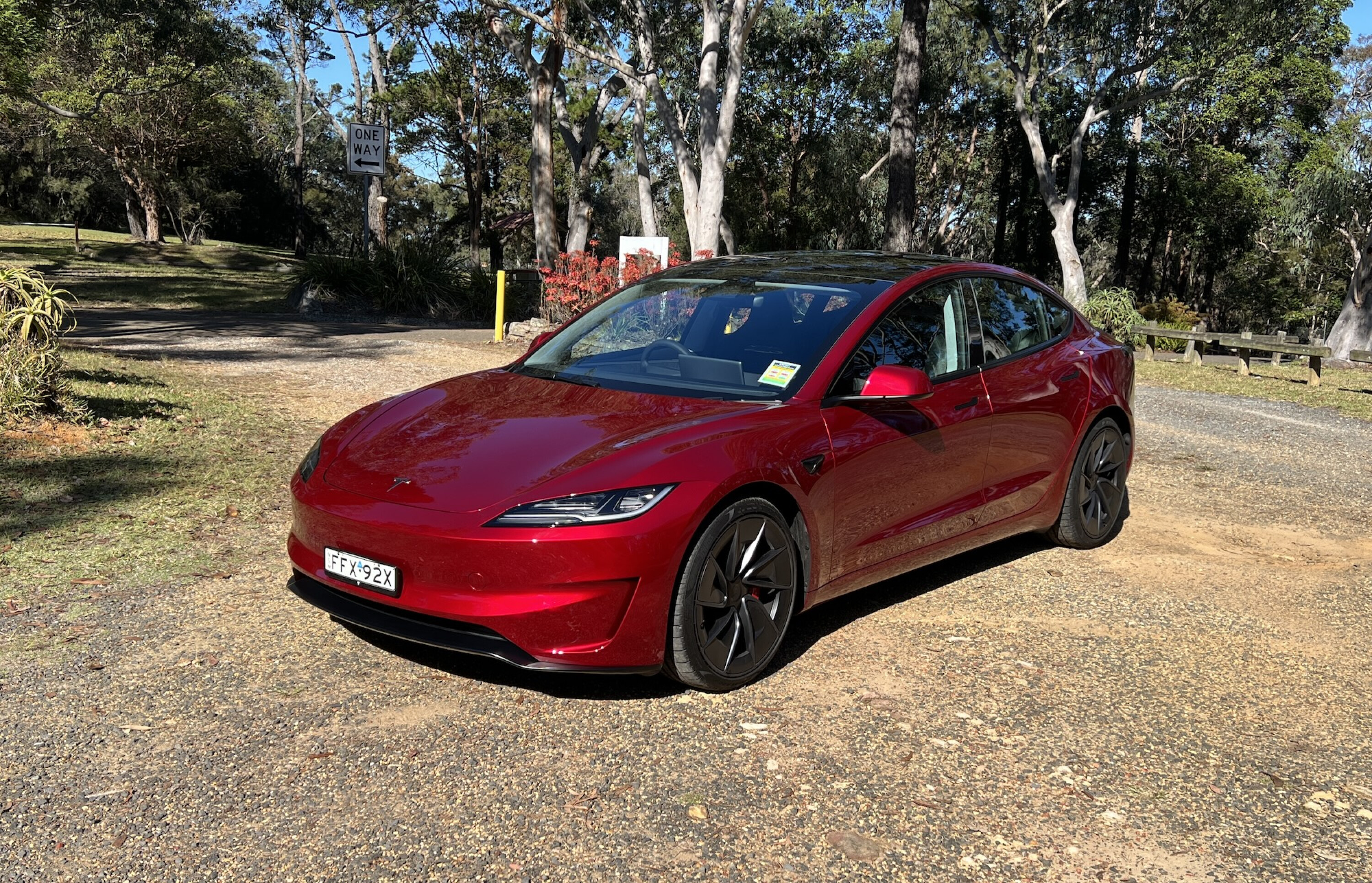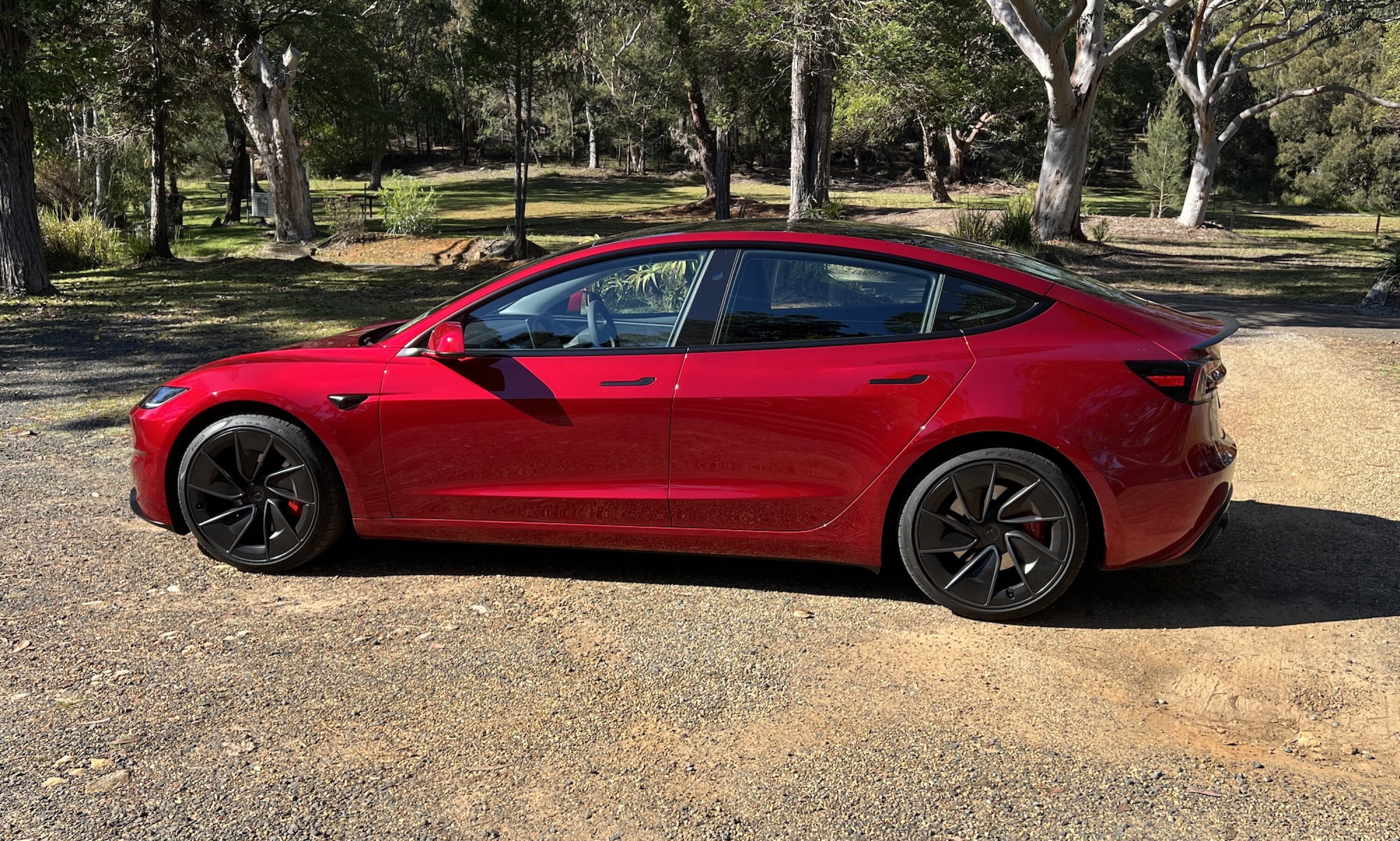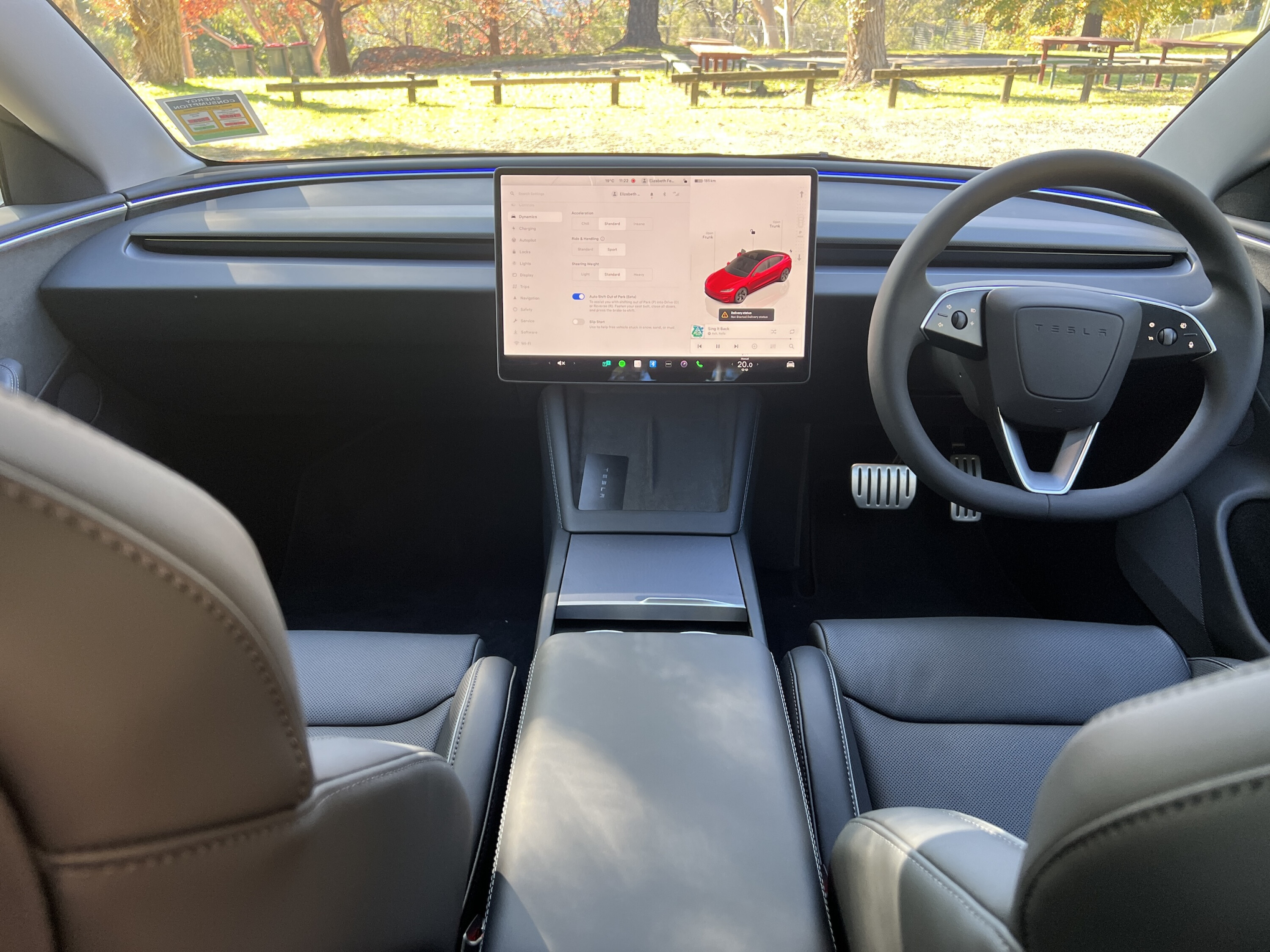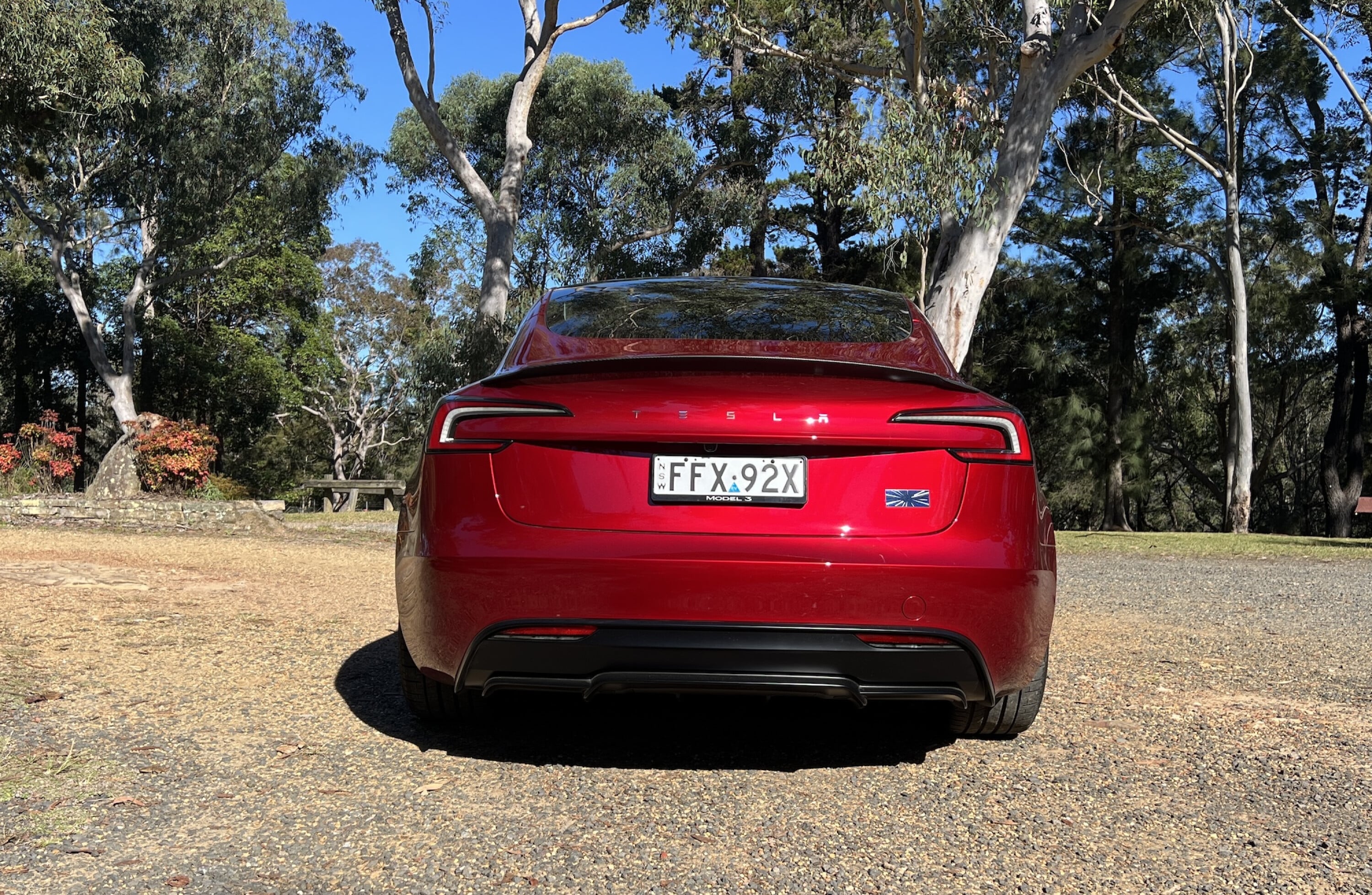
Things we like
- Rapid performance
- Best steering in Model 3 range
- Cabin quality and space
- Improved value for money
Not so much
- Firm, lumpy ride
- BMW i4 and Polestar 2 better driver’s cars
- Could still be greater visual differentiation from rest of range
- No spare tyre or standard repair kit
Hey, haven’t you already reviewed the MY24 Model 3 some months ago?
Well, yes, we have, though that was the entry-level RWD variant that kicks the range off at $61,990… No, wait, that was the price last December. There have been a few changes since and the Model 3 now starts from $54,900. But you may want to check back tomorrow in case that changes again.
Here we’re testing the flagship Performance that has been delayed by several months but finally joins the RWD as well as the mid-spec Long Range.
Historically, the Performance has been our least favourite Model 3, simply because it never seemed great value. It has cost as much as $102K, though is currently available for $80,900 before on-road charges. That’s another $2500 down on when the pre-update model was last offered in September 2023.

Can we presume the Performance lives up to its name again by being the fastest variant?
Not just the fastest Model 3 but a sedan that can out-accelerate a broad range of supercars. A new-generation drive unit – with combined power of 343kW (a rare official spec figure) – has lopped two-tenths off the Performance’s 0-100km/h time, giving it a 3.1-second claim.
On paper, that beats every Porsche Taycan bar the $364K Turbo S (2.8sec).
For more direct rivals, the fastest Polestar 2 manages 4.2 seconds, BMW’s i4 M50 slips just under 4.0 seconds (3.9), and BYD’s Seal Performance is seven-tenths day at 3.8sec.
Hyundai’s upcoming Ioniq 6 N isn’t expected to be faster than 3.4 seconds – the same time as its (fabulous) 5 N crossover sibling.
Of course, in the Model 3 stable the Performance pulverises the base RWD for acceleration – by a whole three seconds – while it holds a 1.3sec advantage over the Long Range that also uses a dual-motor, all-wheel-drive arrangement.
If you head to a racetrack with a suitably long straight, the Model 3 Performance also offers a 261km/h top speed where the RWD and LR are limited to 201km/h.
However, it trades extra speed for range – its 528km trailing the Long Range by 101km, if slightly ahead of the RWD’s 513km.
While there’s a significant premium for the Performance even over the Long Range, there are other extras besides, well, performance.
There’s adaptive damping for the first time on a Model 3 (in tandem with a stiffened chassis), lightweight forged 20-inch wheels with a ‘Warp’ rim design and wrapped in a set of staggered, bespoke Pirelli P Zero 4 tyres, track-ready brakes, version 3 of a customisable Track Mode, and sports seats with enhanced bolstering.
A combination of front splitter, carbonfibre rear spoiler, and rear diffuser lower bumper design are said to improve the Model 3’s high-speed handling and stability.
To help distinguish the Performance from other models, the rear features a silver, blurred-stars-style badge that looks like the view out of the Millennium Falcon’s cockpit when it makes the jump to hyperspace.
Tesla otherwise remains fairly conservative on pallete options, with no extra colour choices offered on the Performance. As with the RWD and LR, white is the only no-cost paint option, there’s a $1500 charge for Solid Black or Deep Blue, while Stealth Grey ($2300) and Ultra Red ($2600) are new-for-2024 colours.

Is the Model 3 Performance an EV for keen drivers, not just those looking to go fuel-free?
The news is mixed here. On the plus side, this is the best-handling Model 3. The Performance’s wider, stickier tyres not only bring increased grip levels but also improve steering feel compared with the RWD.
This fits more naturally with the Model 3’s quick – arguably too quick! – steering and responsive chassis, where the RWD is compromised by its eco rubber.
When attacking corners, the adaptive dampers make a difference – keeping the front end more tied down when in Sport mode where the handling is squidgier in Normal.
Otherwise in regular driving it’s harder to pick significant difference between the Normal and Sport modes. And this is to the detriment of everyday comfort as the Normal damping never relaxes to the extent it could, with the ride feeling stiff-legged and lumpy.
It does ask just how much speed a Model 3 buyer really wants, as the RWD’s suspension is easier to live with every day, even on bigger, optional 19-inch wheels.

But speed the Performance truly delivers. Select Insane mode, jam down the accelerator pedal, and you’re pinned forcefully – almost comically – into the pleather sports seats (which have that same ‘hyperspace’ logo embedded into the headrests).
That mode feels more suited to showing off the Performance’s organ-displacement acceleration. The middle-setting Standard mode provides more manageable driveability for an enthusiast burst along a country road.
The seat bolstering is thankfully more effective at holding the driver in place during committed cornering than the RWD’s pews.
Track Mode V3 brings a new drivetrain and suspension calibration and allows the driver to “customise handling balance, stability controls and regenerative braking to set the car up how you like it”. We’re unable to report on it as the Track mode was disabled for our test drive (it would normally appear as a third setting on the Dynamics menu page).
The rest of the driving experience is a copy and paste of the RWD.
This includes the retrograde ergonomics move of removing indicator and wiper stalks in favour of buttons on the steering wheel – achieving an even more extreme case of cabin minimalism but little else.
For all the early criticism of Tesla build quality, it’s only fair to continue the praise for ongoing improvements in this area. It’s a trend that started with the switch of production from the US to China for Australia-bound Teslas.
For a more detailed assessment of the Model 3 interior, read our RWD review here…

Would you recommend the Tesla Model 3 Performance?
We can’t yet vouch for the Model 3 Performance’s track capabilities, and the adaptive suspension is a missed opportunity to provide a more relaxed and compliant ride in its normal setting.
We would still recommend the RWD or Long Range models, neither of which are exactly snails when it comes to acceleration, to most buyers interested in a Model 3.
The BMW i4 eDrive35 (from $85,900), Hyundai Ioniq 6 AWD Epiq (from $86,500), and Polestar 2 Dual Motor Performance (from $85,400) are also three electric sedans that offer more for drivers who enjoy corners, though this Model 3 is much more convincing than the Performance variant of the BYD Seal.
Overall, the Model 3 Performance offers incredible bang for your buck. Circa-three-second acceleration for less than $90,000 drive-away is basically unheard of.
No direct rival can touch it, while the Tesla will terrorise Taycans costing more than three times as much.
Things we like
- Rapid performance
- Best steering in Model 3 range
- Cabin quality and space
- Improved value for money
Not so much
- Firm, lumpy ride
- BMW i4 and Polestar 2 better driver’s cars
- Could still be greater visual differentiation from rest of range
- No spare tyre or standard repair kit




